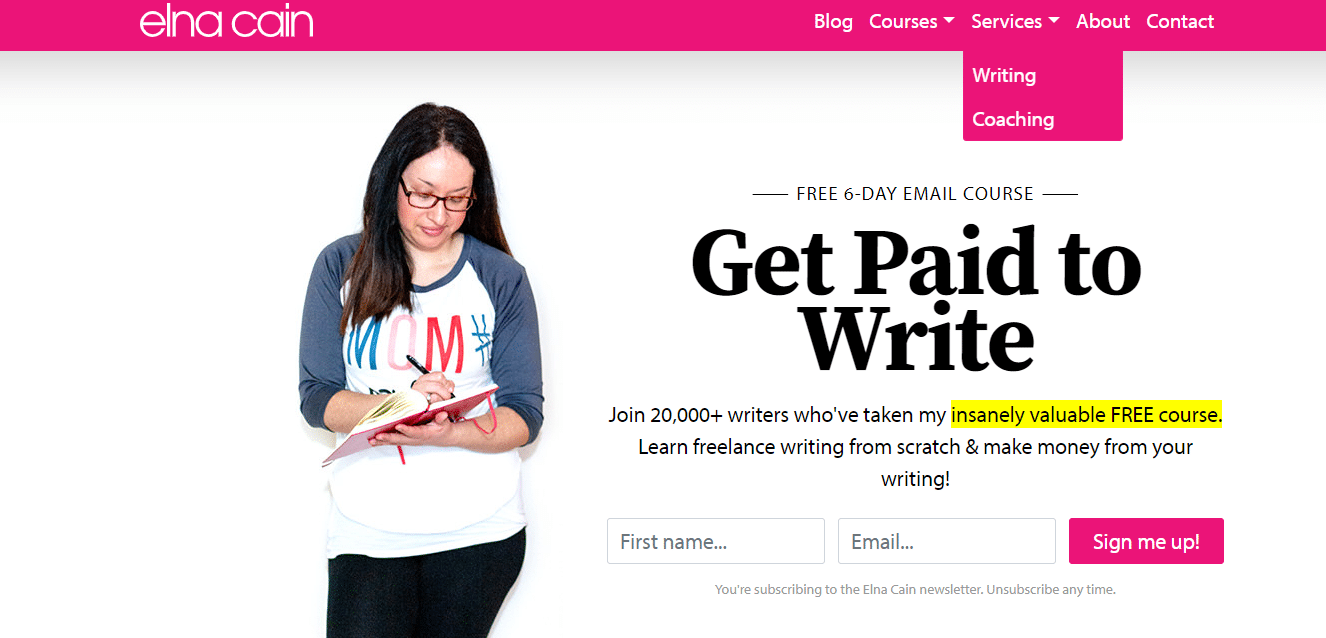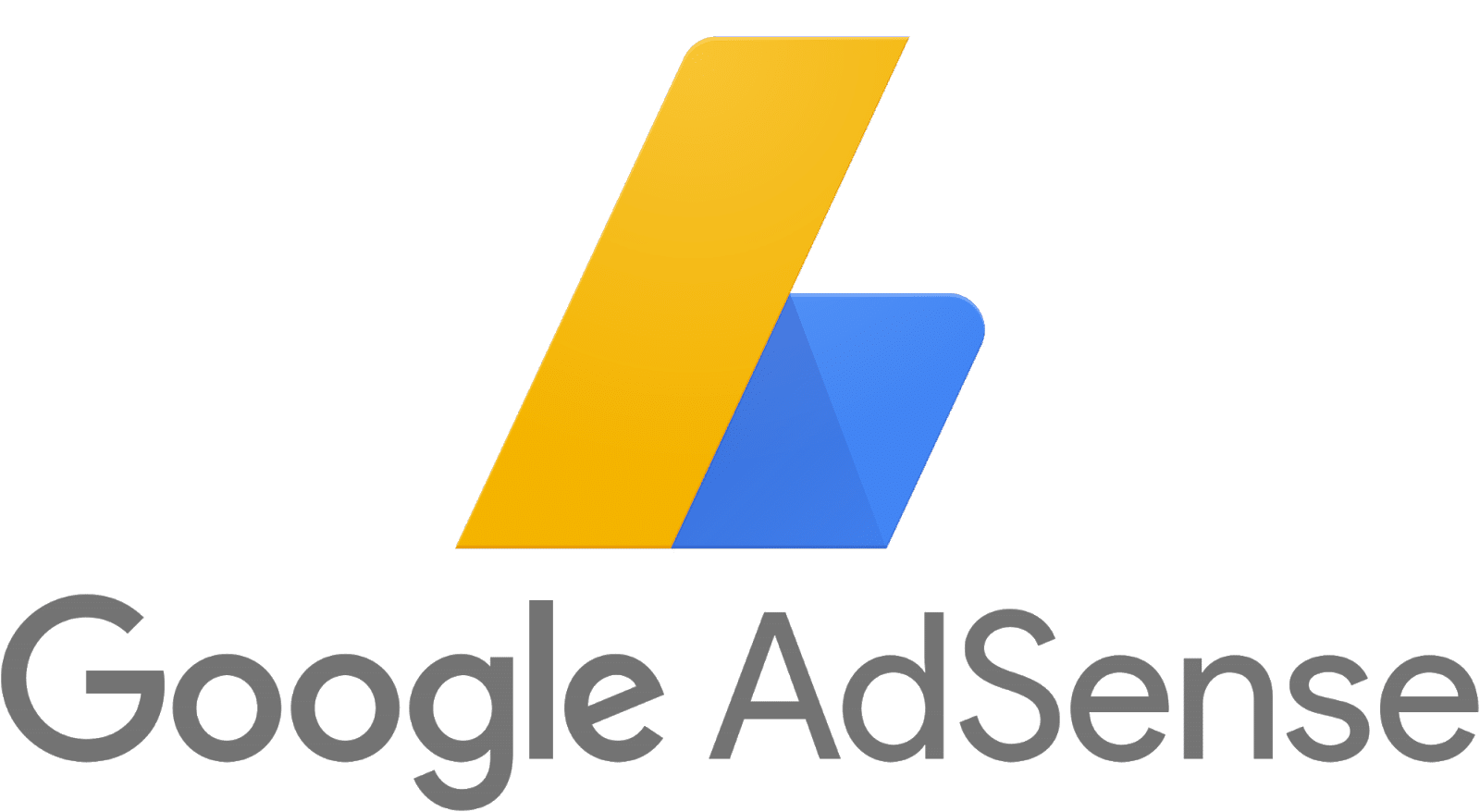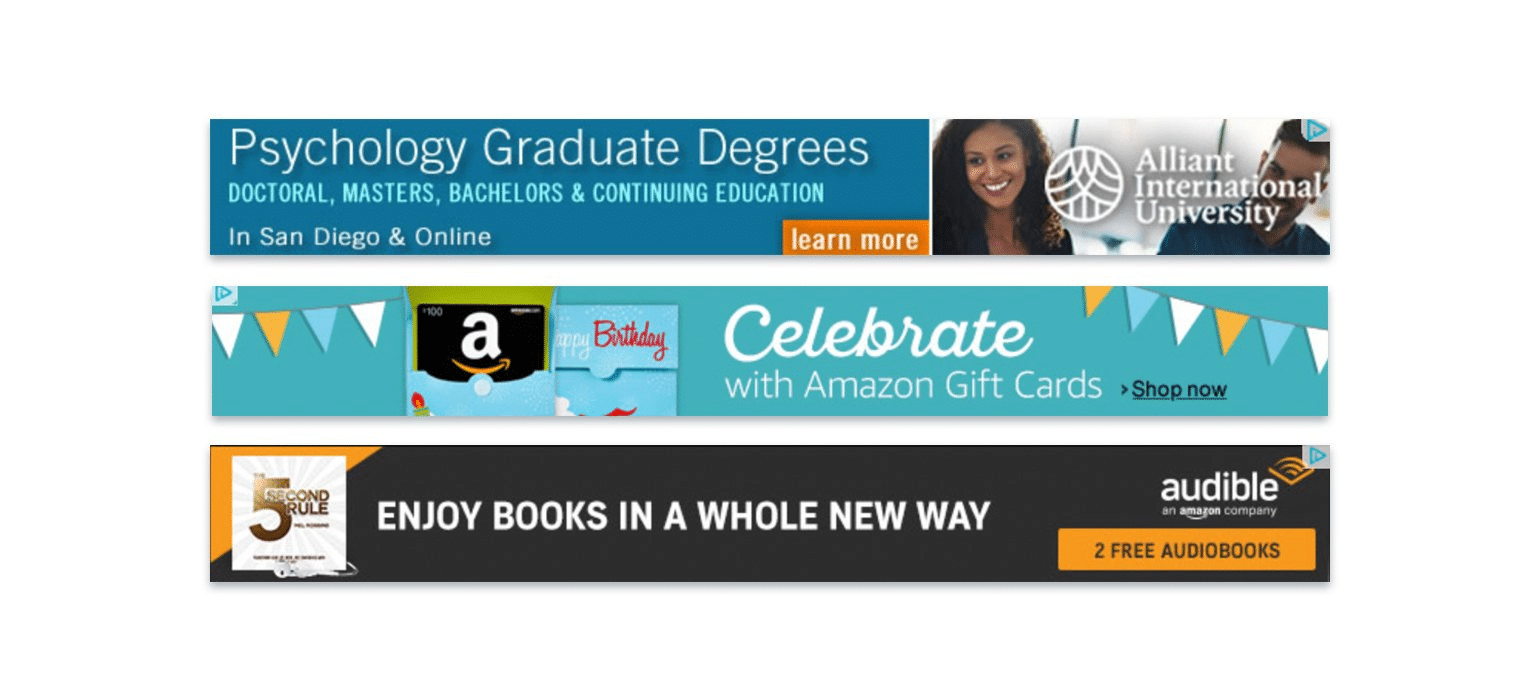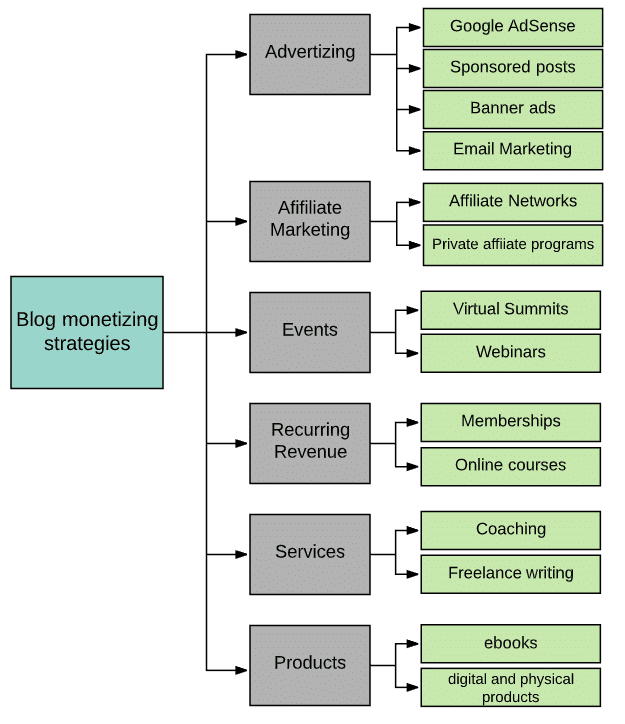Did you know that with just a few hundred dollars, you can start making money with your blog?
Yes, you can get an adequate income stream to even quit your 9-5 job, and become your own boss.
But is it that easy to go from being a new blogger to one of the pro bloggers and make money on a monthly basis?
Truth be told…
It takes time to get a passive income from blogging.
No matter what stories you’ve read – no real success ever happened overnight.
You have to be patient and do really hard work.
And in this article, I want to guide you on how you can start monetizing your own blog.
It would be best if you had a solid marketing plan, a great monetization strategy that will help you make money blogging.
But, let’s first see when it is the right time to start monetizing a blog:
Table of Contents
Patience is the key
No doubt. Before you start making money through your blog, you will have to learn how to maintain it, how to write and create great content, how to get more visitors, and build engagement with the readers that come.
When you achieve a high level of engagement, it is an excellent point to attempt to make money. It is a common assumption that when your blog traffic starts to get over 10,000 monthly pageviews, then yes – it’s relatively easy to create a gentle revenue stream with it.
However, you always need to be aware that the money won’t just automatically flow. It takes continuous work and experimentation.
So without further ado, I want to share with you now 12 monetization methods successful bloggers follow:
#1: Online Courses

Image source: Pexels
Creating an online course is a great way to start monetizing your blog and upgrade your blogging career. And you don’t need to be an influencer and have many leads to make a decent income from your courses.
And if you wonder if online courses are profitable: The e-learning industry is expected to grow to about $406 billion by 2024!
With an online course, you deliver your best content exclusively to customers. All you need to teach a course is to know more than the people you’re teaching.
And what’s more interesting about it is that with the right platform, it is straightforward and time-saving to create educational material in the structure of a course.
How can I come up with a great course idea?
Online courses are focused on a specific subject or topic. To find the best subject, you have to find out exactly what your visitors want.
If you already have an audience, then you need to identify a problem that a lot of them share that you can solve. Here are some ways to do that:
- Send a survey: Ask your audience about the issues they have. You can do this by sending a simple survey through email.
- Read blog comments: You can either read feedback from your blog or other blogs and identify problems in your niche.
- Directly ask your audience: Reach out to social media, email or write a blog post asking for feedback directly from your audience.
How can I create an online course?
To create an online course, you will need to first create the content and then find a course platform to host, sell and deliver it.
For your course content, you can use literally any kind of material you have already created (ebooks, webinars, videos, podcasts, etc.) and turn it into educational material. Don’t forget to add a high level of interactivity in your courses, so that students feel they are actively engaged.
This is exactly what we do here at LearnWorlds, we offer the learning platform to easily create, market and sell your online courses, all in one place. Feel free to check out our website and sign up for a 30-day (no commitment) free trial.
#2: Affiliate Marketing

Image Source: LearnWorlds
Affiliate marketing is an online strategy that involves promoting a vendor’s product in exchange for a commission. It works that simple as this:
- You make a business arrangement with a third-party business or an individual to promote their product through content marketing.
- The vendor pays you a commission in exchange for business leads or sales generated from your promotional efforts and direct referrals.
As an affiliate marketer, you will work the same way as most salespeople. It starts by finding an exciting product that you like, making an effort to piggyback on a great product, and, in the end, earning a piece of the profit for each successful sale (Referral commission).
It is not a good idea to just pitch products with affiliate links to make sales. Instead, you should provide value to your readers and not just pitching products so you can make a sale.
Where can I find those products?
You can find products to promote from affiliate networks such as:
Also, many companies offer direct affiliate programs, so you deal directly with the business that sells products or services that you are planning to promote.
You have to go to Google and use the following query:
“[niche/product] affiliate program.”
Ask for an affiliate offer and make sure their products/services fit your niche.
An alternative way is to check what affiliate products other blogs in your niche are promoting, and reach out to those businesses yourself. Also – why not – you can become an affiliate for anything you have paid for and used on your blog!
Many bloggers already do this with a ‘best resources’, ‘suggested tools’, ‘income pages’ or software lists as part of their main blog pages.
#3: Virtual Summit
Virtual summits are essentially conferences you can attend online with a host, Q&A sessions, and multiple speakers covering a specific topic.
You’ve probably attended a virtual summit before. The main distinction between virtual summits and webinars is that the later ones are a lot more interactive and engaging.
You can find Virtual summits for almost any niche you can think of. And you can also drive traffic through them. The excellent idea is to teach entrepreneurs how to launch and grow a successful blog as you do until now!
The best part is, you don’t need to be a well-known blogger to host one. You can interview other influencers in your niche to pull credibility. It is easy to find influencers you can connect with by using Buzzsumo.
In Buzzsumo’s homepage, you can type in your niche keyword and find an influencer in your niche. Reaching out to them immediately and asking them to speak at your summit, rarely works. Prefer to build a relationship with them first by following them on social media and making guest posts on their blog.
How can I make money with a virtual summit?
Virtual summits are accessible for a limited period, although they usually are free to access.
Therefore, you can make money by selling an “all-access pass” that allows attendees to go over the conference material anytime they want. Or, you can keep VIP sessions for paid members only which will be more in-depth or act like a small group coaching.
#4: Memberships
A membership site is a closed section of your online business. Members have to subscribe either monthly or annually to receive exclusive benefits: Exclusive articles, advice, reports, webinars, in-person meetups, and just being around like-minded people.
Membership sites allow you to reach more people and also give everyone a sense of community and belonging.
Creating a membership site might be the most profitable thing you can do if you have an audience that’s dedicated and already spend money to improve their skills. You can quickly start making thousands of dollars, with only a few hundred members.
A great example on membership sites is SmartBlogger with its Serious Bloggers program. You can find more examples of membership sites here.
#5: Email Marketing
What about my email list?
Yes, you can also use that to make money blogging! No matter, the amount of traffic, you always keep in the archive all emails you received from the beginning.
Building an email list is a fundamental thing to do before you start monetizing your blog.
And what you can do with these emails is to build a stable relationship. A relationship is the easiest way to establish trust and sell a product.
It all begins with creating awareness about your primary business and then gradually deliver immense value in every phase.
First, understand this:
It is ok to sell to your readers as long as that product is valuable.
However, you must forget about your own products in the first place and build a trustworthy relationship with them. That’s where the funnel comes in.
You should nurture potential customers through content: your blog posts, videos, infographics, ebooks, and so on. And through your emails, you can ask them exactly what they are struggling with and then, create high-value content for them.
See for example, Matthew Hussey. He is a life coach who helps people get the most out of life and also find real love. What he does once you subscribe to his newsletter is send a series of compassionate emails on what relationship problems people are facing.
This is how he creates value in people’s minds. And then, what he does is gradually provide several free resources with advice and mini-coaching that at some point solve a problem. But for the real stuff (books, coaching, events), you have to pay something in exchange. This is where sales come.
The important thing is that till this stage, he has created the need for you to buy his services.

Image Source: 6 Magical Days. A Lifetime of Change
An email list can be used to:
- Sell products
- Sell services
- Affiliate marketing
- Get paid for sponsored emails
#6: Coaching Services
Inevitably, your readers will have challenges in life. As a coach, your responsibility will be to help people manage them.
One on one coaching help people receive more detailed and personalized instructions than a book or course can provide.
They want to learn new skills and improve in certain areas. So, coaching is another great way to start making money.
And you will have the pleasure to guide people step by step to ascertain certain skills.
No matter when you started blogging, offering a coaching service to motivated clients can bring you money. And it’s more about getting the right kind of traffic, i.e., people that need your coaching advice and can afford to pay you than just getting a lot of traffic.
How to pave the way for coaching
Before you rush in and start offering coaching services, first and foremost, create useful and exciting quality content, as we mentioned before, on subjects that matter to those prospects.
And having a strong reason “why” people should prefer you instead of your competitors will give you a decisive edge. See, for example, Elna Cain. She is an experienced freelance blogger who also offers coaching services on freelance writing business:

Image Source: elnacain.com
What she presents looks so professional and specialized, that people immediately receive her as a determined coach who can and is going to solve all their problems.
#7: Google AdSense & Ad Networks

There’s a reason ads are still popular despite people saying it’s a bad monetization strategy because you can’t make anything decent with it.
In fact, you can start with display ads until you are ready for more profitable monetization strategies. Those first few dollars will give you enough motivation to continue with the blog.
The biggest ad network is Google’s Adsense. It lets you make money by placing targeted ads on your website or blog.
And the best thing is…You get paid per click (PPC) when visitors click on the ads.
And you don’t really have to invest any money or work into it. Adsense serves relevant advertisements on your blog and pay you every time someone clicks on the ad.
There are many alternatives to Adsense you could use to monetize your blog. Display ads from these networks are one of the most common monetization methods for bloggers, and usually how most begin, as they are quite easy to setup and start making money.
Each network has their own requirements and niches, you will need to do some research before deciding which one to join, if you are unsure, Google Adsense is the best way to start!
#8: eBooks

Image source: Pexels
One of the most popular ways to monetize a blog is selling ebooks. And you don’t need a lot of traffic on your blog to make money with your books.
It’s perfect because it’s relatively easy to create and is usually priced adequately enough that most visitors can buy.
Want to make money writing short ebooks? You can start with your best blog posts. You can repurpose some of the content you’ve already written on your blog and then add more detail and context or hire ghostwriters to do it for you.
You can write ebooks in any niche. There are ebooks on blogging, photography, weight loss, and anything you can think of.
You can promote your books in several ways:
- Cold email businesses to solve problems and gradually link to your book.
- Answer questions on Quora and Reddit and then pitch your book as an additional source of information.
- Ask your audience about the problems they have in your niche and point them to your book.
- Add your book on Product Hunt.
What’s more, you can publish those products on Amazon. Amazon attracts millions of buyers. And you already know that Amazon is a trusted online shopping site and you can make a great business on Amazon.
An ebook will show you if people are interested in what you’re covering enough to pay for it. Then, you can use this inspiration and create a profitable course or a membership site! So, ebooks are a low-risk way for visitors to judge the value you can bring before buying more expensive products.
#9: Digital Products
Virtual goods include many of the products we have already mentioned like eBooks and courses, and also others, like:
- Reports
- Digital downloads (PDFs)
- Templates and themes (e.g., Lightroom and Photoshop templates)
- Audio recordings
- Tutorials
- Podcasts
- Other info products
You can read more products in “20 digital products to sell online” by Will Mitchell. There are two approaches you can take to sell your digital products online:
- Sell directly on your website or
- Sell through established marketplaces.
#10: Physical Products (Merch)
You only know so well the people who follow your blog and already trust you. Aside from digital products, you can look into selling real goods through your blog, such as t-shirts, posters, etc. to sell.
To start selling, you will have some expenses, and you need to invest some time: Manufacturing, packaging, shipping, and storing. Of course, an easier way to start a product store is dropshipping.
Finding the right product to sell might be a little tricky at first, but you will get better the more you do it.
But, physical products can give you an incredible and unique advantage over all your digital product producing peers.
- Physical products generally have a high perceived value. There can be an actual value placed. You can do demonstrations with a physical product and customers can touch it and feel it. They can see how it works, what it does, and how it will benefit their life.
- You can find physical products that can correspond with digital products (e.g., your courses).
#11: Banner Ads

Image Source: Instapage
A banner ad is a form of digital advertising embedded onto a webpage to send traffic to the advertiser’s website.
As I mentioned before, I don’t think banner ads are dead. Some significant advancements have happened in the banner ad arena since they aroused, allowing you to get paid per click.
The average click-through rate on a typical banner ad is 0.04%. This engagement can seem low, but if ROI is positive, it’s still an advertising success! Think that TV spots have just a 0.05 percent response rate.
Also, there have been considerable improvements in types of display ads available to marketers and advertisers. You should only make sure you use the right banner ad strategy. We have talked before about ad networks, selling banners ads yourself might be more challenging but more profitable, especially for blogs with high niche traffic.
So, if you want to add banners in your blog, make sure you:
- Prepare a media kit.
- Incorporate branding and messaging that is clear.
- Are concise in content and imagery. It is a best practice of banner ads to keep your content brief.
- Include a call-to-action (CTA). A CTA is often a button with a compelling text of what will happen when the user clicks on it.
- Keep banner ads consistent in all of your pages and social media.
#12: Sponsored Posts
Last, but not least, sponsored posts! With sponsored posts and reviews, you can charge a company a fee to write about their product on your blog and give your opinion of it.
What the company gains is that its product gets exposed to the blogger’s audience, and the brand gets more exposure and new customers.
It is one of the least common ways of monetizing a blog. You will need to have a lot of traffic and credibility or be an established blogger in a very niche subject . You will also need to have a substantial online presence before you can get companies to pay you anything significant.
Think of influencers you know on Instagram and Youtube. Influencer marketing has already experienced tremendous growth.
When using sponsored posts on your blog, make sure to give your honest feedback about a product because it’s not worth losing the trust of your readers for a few bucks.
You can now start monetizing your blog!
Having analyzed all those techniques, I want to take things from the beginning a little bit…
You have successfully built your blog. With a sustained focus upon creating great content, you will begin to notice new people visiting your blog and engaging with your content and not just your core audience.
At this point, you need to switch your focus to building community with those readers:
- Respond to comments
- Reach out to those readers personally
- Work on your authority
- Establish partnerships and collaborate with others in your industry
Keep them coming back again and again by building a “sticky blog” as Darren Rowse – the blogging legend – once said. You may also need a successful Business Development team.
And once you have stuck your audience to your blog, this is the time your monetization strategies will work best:

Image Source: LearnWorlds
There’s no doubt that what we’ve covered is a lot of work and requires a lot of time. However, if you do it well, you’ll be giving yourself every chance of becoming one of those niche websites and earn a full-time income!
